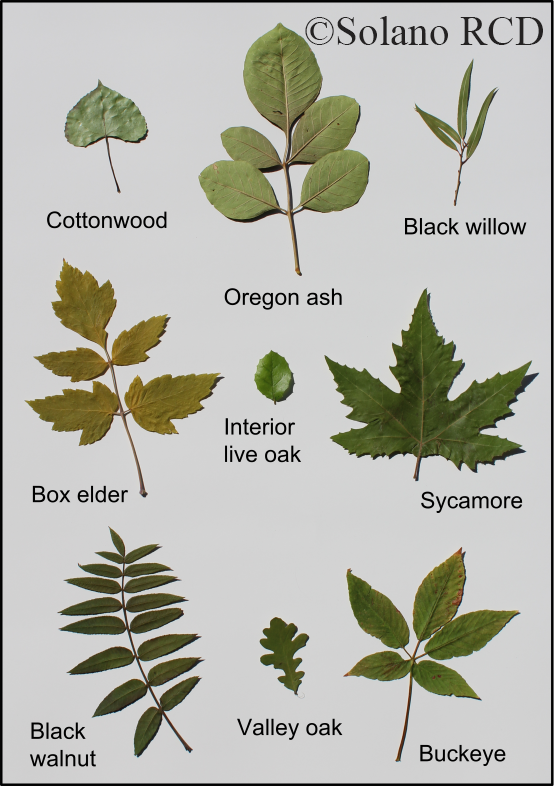Over 600 native trees were planted as part of the Pond C Biofiltration and Habitat Project. Water-loving species such as cottonwood and willow were planted closer to the seasonal wetlands at the bottom of the basin, while more drought-tolerant species like valley oak and buckeye were planted in upland areas along the path. These trees are all native to California’s Central Valley and do well in our climate. Not only do they cast cooling shade for park visitors, they also provide important resources for local wildlife.
Each valley oak, for example, can produce over 500 pounds of acorns. Acorns are a valuable food source for many animals, including grey foxes, scrub jays, and acorn woodpeckers. Valley oaks grow 100 feet tall, and their massive size and craggy bark shelters numerous insects, birds, and other animals that live among the branches.
Although extensive clearing for agriculture and urbanization greatly reduced our forests and woodlands in the last century, projects like this are restoring these valuable habitats.

Leaf shape can help you identify trees at Pond C.

